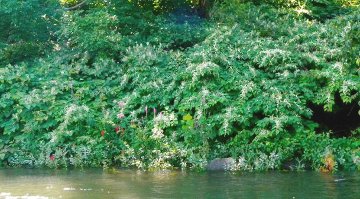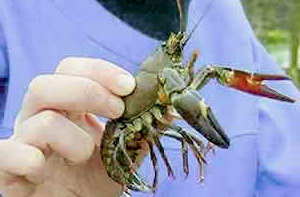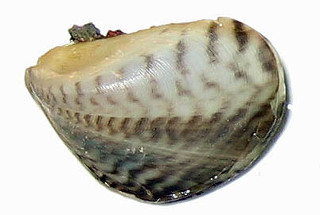Dutch invaders
THERE has been much speculation in the newspapers, radio, television and various political parties about a potential invasion of humanity from Eastern Europe, writes Mick Fitzgibbons.
Though to be perfectly honest I quite enjoy the cosmopolitan life that the people bring with them, though I think there is need to have some form of regulation in place. But that's all grist for the political mill in the run up to the election in may. However, I do want to give a heads-up about another form of invasion which is massing along the cost of mainland Europe.
 Infestation
Infestation
This time the invasion comes in a number of different forms. As plants such as Himalayan balsam which is petty benign invader when compared to the significantly costly Japanese Knot-weed infestation. (Pictured), estimated to cost billions to eradicate and which seems to be rampant along much of the inland waterways.
Most people are aware of the problems with the North American Mink which is almost solely responsible for destroying the water voles. Voles that are so beloved of the Trust. The numbers of Mink continue to climb and the trust continues in its quest to reintroduce the voles, which will potentially provide a light snack for the next Mink passing through.
 This long running disaster is being backed up by the efforts of another American invader the Signal Crayfish (pictured) that is wiping out the indigenous crayfish, by the simple expedient of carrying a disease which our natural crayfish have no immunity from. Then there is the Mitten Crab which has also staked a claim to life in the UK, as well as the new kid on the block the Zebra mussels.
This long running disaster is being backed up by the efforts of another American invader the Signal Crayfish (pictured) that is wiping out the indigenous crayfish, by the simple expedient of carrying a disease which our natural crayfish have no immunity from. Then there is the Mitten Crab which has also staked a claim to life in the UK, as well as the new kid on the block the Zebra mussels.
Further 20 species
I have been listening to a very interesting broadcast about the UK's inland waterways. It seems that there is a very serious risk of up to a further 20 alien species located just across the sea in Holland waiting to invade the UK waterways. David Aldrich is an expert in invasive species and he highlighted that the invaders have evolved symbiotic relationship with each other.
They are in the main from the eastern part of Europe. Originating mainly from the Ponto Caspian area around the Black Sea. As canal systems have been dug joining river systems together or improved to provide transport between regions on the mainland of Europe, so the critters have used the waterways to fast-track their movements into western Europe.
 Major disaster
Major disaster
David Aldrich said the one species that we did not want to arrive was the Quaggar Mussel. (Pictured.) However, the mussel had recently been found living in a river system close to Heathrow airport. This is a major economic and ecological disaster.
The mussel is capable of changing the nature of waterways and of encouraging the very poisonous blue/green algal blooms. It can also cause the rampant growth of weed which will have a detrimental effect for recreational angling and boating communities. The Quaggar Mussel is in a way creating the conditions for the other potentially invasive species to thrive. One such species is the Killer Shrimp, which has the potential to create complete devastation of the natural life living in our inland waterways.
Waterways closed to boating
David Aldrich told that boats passing between various waterways where the invasive species had bee identified should have their hulls cleaned. He also added that fishermen need to clean and dry their fishing equipment before using them on other waterways. This raises a spectre of sections of rivers and canals being closed to boating.
However, there was a possible solution to remit the effect of the Quaggar Mussel which had been tried in Holland. What he described as a toxic bullet. It is a particle that is small enough to be gathered by the filtering system of the Quaggar which would then poison the mussel. The toxic bullet is also effective on the Zebra Mussel. The bullet would then break down into a harmless material after a short period of time.
